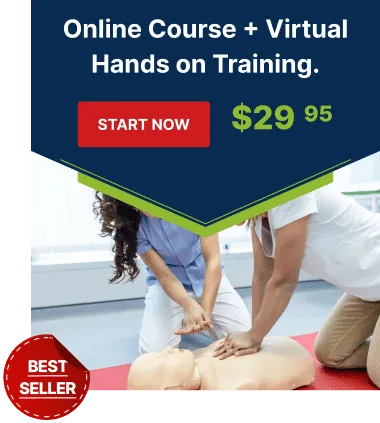Ever stumbled through a critical moment, wishing you had a lifeline of medical knowledge right at your fingertips? This is where a BLS cheat sheet comes in handy. It helps healthcare providers and first responders recall critical life-saving steps during emergencies.
Basic Life Support (BLS) follows a structured approach to ensure effective chest compressions, rescue breaths, and defibrillation when needed. Even if you are responding to cardiac arrest, choking, or respiratory distress, clear guidelines help you stay focused under pressure. With the right steps, you can ensure better outcomes, prevent hesitation, and reinforce skills learned during training. So, keep reading to get the BLS skills check-off cheat sheet with all the important steps.
Master ACLS Now
Get ACLS certified with confidence
What Are the Basics of BLS?
Basic Life Support (BLS) is an emergency intervention that maintains life in medical emergencies such as cardiac arrest, respiratory difficulty, or blocked airways. It encompasses CPR, AED operation, and airway maintenance.
BLS is essential as it keeps circulation and oxygenation going until the arrival of advanced medical intervention. Effective and timely BLS can significantly affect survival rates and outcomes for those with cardiac events.
Who Needs BLS Certification?
- Healthcare Personnel: Nurses, physicians, paramedics, and other medical staff.
- First responders: Medical technicians, firefighters, and police officers.
- General Public: Although not required, individuals such as teachers, coaches, and caregivers should consider becoming BLS-certified to respond to emergencies in their everyday environments.
Key Skills Covered in BLS Training
- CPR: Merging chest compressions with rescue breaths to provide blood and oxygen flow.
- AED Use: Training on AEDs, delivering shocks that may reset the normal heart rhythm.
- Airway Management: The Heimlich maneuver and positioning techniques to avoid airway blockage secure open airways.
Read more: What Is the Indication for Mouth-to-Mouth Rescue Breaths?
BLS Cheat Sheet: Key Steps for Life-Saving Action
A BLS cheat sheet is a rapid reference sheet detailing key life-saving procedures for cardiac arrest, choking, and respiratory failure. This BLS basics cheat sheet assists healthcare professionals, first responders, and trained personnel in conducting vital interventions effectively. The key steps involved in BLS are listed as follows:
Step 1: Assessment of the Scene and Summoning Assistance
Before providing aid, check the surroundings for safety. Look for hazards such as fire, electrical dangers, or traffic that could put both you and the victim at risk. Once the scene is safe, approach the person and determine their condition.
Step 2: Check for Responsiveness
Tap the victim’s shoulders and say, “Are you okay?” If there is no response, proceed with BLS. If the person is responsive but unable to breathe properly, seek emergency help immediately. If you’re alone with the victim, call 911 or your local emergency number. If accompanied by another person, have one call while the other starts CPR.
Step 3: Check for Breathing and Pulse
Look, listen, and feel for breathing for no more than 10 seconds. If there is no normal breathing or only gasping, begin CPR immediately. Check for a pulse using the carotid artery (adults and children) or the brachial artery (infants). If no pulse is found, start chest compressions.
Step 4: Conducting High-Quality CPR
Follow the BLS review of the C-A-B process (compression, airway, and breathing). Perform 30 chest compressions and deliver two rescue breaths.
Chest Compressions
Place the heel of one hand on the center of the chest (lower half of the sternum). Use both hands for adults, one hand for children, and two fingers for infants. Follow the compression rate of 100-120 compressions per minute. The compression depth varies with age:
- Adults: At least 2 inches (5 cm)
- Children: About 2 inches (5 cm)
- Infants: About 1.5 inches (4 cm)
Allow the chest to recoil after each compression and minimize interruptions in compressions.
Airway Management
Open the airway using the head-tilt, chin-lift maneuver. If spinal injury is suspected, use the jaw-thrust maneuver without tilting the head.
Rescue Breaths (Mouth-to-Mouth or Bag-Mask Ventilation)
Give 2 rescue breaths after every 30 compressions. Each breath should last about 1 second and make the chest rise visibly. If the chest does not rise, reposition the airway and try again. Avoid excessive ventilation, which can reduce blood circulation.
Step 5: Using an AED (Automated External Defibrillator)
An Automated External Defibrillator (AED) is a life-saving device that can restore a normal heart rhythm in cases of sudden cardiac arrest. It provides clear voice prompts, making it easy for both trained and untrained individuals to use effectively. The process begins by turning on the AED and following the instructions provided.
- Adults & Children (8 years and older): Place one pad on the upper right chest and the other on the lower left side.
- Infants & Small Children: Use pediatric pads if available or place one pad on the chest and one on the back.
After the pads are attached, the AED will analyze the heart rhythm. Ensure no one is touching the victim during this process. If a shock is advised, deliver it as instructed and immediately resume CPR to maintain circulation.
Step 6: Handling Choking (Airway Obstruction)
Choking occurs when a foreign object obstructs the airway, preventing normal breathing. The approach to managing choking varies based on whether the individual is conscious or unconscious, as well as their age.
Conscious Adult or Child
If the person is choking but still conscious, the Heimlich maneuver is the most effective technique.
Stand behind the person and place your hands just above their navel. Using a firm grip, give quick, inward, and upward thrusts to force the object out. Continue these thrusts until the obstruction is expelled and the person can breathe normally.
Unconscious Adult or Child
When an adult or child becomes unresponsive due to choking, lower them gently to the ground and immediately begin CPR, starting with chest compressions. Before providing rescue breaths, check for any visible obstruction in the mouth. If an object is present and can be safely removed, do so, but avoid blind finger sweeps, as this may push the object deeper into the airway.
Infants (Under 1 Year Old)
Choking management for infants requires a different technique due to their small size and delicate airways. If an infant is choking, position them face-down along your forearm, supporting their head and neck.
Deliver 5 firm back slaps between the shoulder blades. If the object does not come out, turn the infant over and perform 5 chest thrusts using two fingers. Repeat this cycle until the obstruction is cleared or the infant becomes unresponsive. If the infant stops responding, begin CPR immediately.
BLS for Special Populations
Basic Life Support (BLS) techniques must be adapted when dealing with certain populations to improve survival chances while minimizing complications. Factors such as pregnancy, drowning, and trauma require modified approaches to CPR and airway management. Below is a BLS summary and the techniques required for these special cases.
| Population | BLS Considerations |
| Pregnant Women | Perform high-quality CPR as usual. Position the woman slightly on her left side to relieve pressure on major blood vessels. Use higher hand placement for chest compressions if needed. |
| Drowning Victims | Give rescue breaths first before chest compressions. Prioritize oxygenation since water-related cardiac arrests are typically due to lack of oxygen. |
| Trauma Patients | Be cautious when moving the victim, especially if spinal injury is suspected. Use the jaw-thrust maneuver to open the airway instead of the head-tilt, chin-lift. |
Read more: What Special Circumstances Should A Rescuer Consider When Using an AED?
BLS Test Answers and Skills Check Off Cheat Sheet
Basic Life Support (BLS) certification requires knowledge of CPR techniques, AED usage, and emergency response protocols. You can pass the exam after learning the common test questions and hands-on skills. The table below lists key questions and BLS test answers.
| BLS Questions | BLS Answers |
| What is the ideal depth of adult chest compressions in CPR? | Compress the chest down at least 2 inches (5-6 cm) deep. |
| How fast should chest compressions be done? | 100 to 120 compressions per minute. |
| How does the compression-to-ventilation ratio differ between adults and infants? | Adults: 30:2; Infants (single rescuer): 30:2; Infants (two rescuers): 15:2. |
| What is the first step upon discovering an unresponsive individual? | Ensure scene safety, then check for responsiveness. |
| When should an Automated External Defibrillator (AED) be used? | As soon as it’s available, and after calling emergency services. |
| How long should you check for a pulse before starting compressions? | No more than 10 seconds. |
| What is the correct hand placement for adult CPR? | Place hands on the center of the chest, the lower half of the sternum. |
| How do you provide rescue breaths effectively? | Each breath should last about one second and make the chest visibly rise. |
| What should you do if an adult victim has a pulse but is not breathing normally? | Provide one breath every 5-6 seconds (10-12 breaths per minute). |
| What is the recommended action if an infant is choking? | Deliver five back slaps and five chest thrusts until the object is expelled. |
| How can you minimize interruptions during chest compressions? | Switch compressors every two minutes and ensure rapid AED deployment. |
| What should be done immediately after a shock from an AED? | Resume chest compressions immediately for two minutes before reassessing. |
| What is the recommended compression depth for infants? | About 1.5 inches (4 cm). |
| What is the recommended compression depth for children? | About 2 inches (5 cm). |
| How do you recognize effective chest compressions? | The chest recoils completely, the rate is 100-120/min, and compressions are deep enough. |
| What is the primary purpose of defibrillation? | To restore a normal heart rhythm in cases of cardiac arrest. |
| What is the first action when using a bag-mask device for ventilation? | Ensure a proper seal over the nose and mouth. |
| How do you treat a drowning victim who is unresponsive? | Begin CPR immediately, starting with chest compressions. |
| When can you stop performing CPR? | When the person shows signs of life, advanced medical help arrives, or you are too exhausted to continue. |
How to Avoid Common BLS Mistakes and Master Essential Skills?
A BLS review helps healthcare professionals and first responders refine their life-saving skills by identifying common mistakes and improving techniques. Proper CPR, AED use, and ventilation are critical for patient survival, but errors can reduce effectiveness.
Common Mistakes in BLS and How to Avoid Them
One of the most frequent errors is insufficient chest compressions. Adults require compressions of at least 2–3 inches, while children need 2 inches to ensure effective circulation. Another issue is improper AED pad placement, which can render defibrillation ineffective. Following the device’s instructions prevents this mistake. Poor ventilation techniques can also lower survival rates. Providing adequate rescue breaths with the correct airway positioning ensures proper oxygenation.
Master the BLS Skills Check-Off Cheat Sheet
BLS certification requires passing a BLS skills check-off assessment. Success depends on regular practice and simulation-based training. Focusing on the correct compression-to-breath ratio, hand placement, and AED operation helps candidates perform confidently. Many professionals use Resuscitation Quality Improvement (RQI) programs, which provide real-time feedback to enhance CPR performance. Different reputed organizations also offer hands-on training in CPR, AED use, and emergency response to strengthen practical skills.
Review BLS Notes and Guidelines
Thoroughly reviewing BLS notes before an exam ensures a solid understanding of core principles. Use official materials from reputable organizations for accurate information. You can also take mock exams to reinforce knowledge and attend practical sessions for hands-on experience.
BLS Refresher to Maintain Certification and Enhance Skills
A BLS refresher is essential for staying up to date with current guidelines. Certification typically requires renewal every two years, with a 30-day grace period after expiration. Keeping credentials active ensures professionals remain competent in life-saving techniques.
Master BLS with Confidence!
The ultimate BLS cheat sheet makes rescuer-friendly techniques simple, prepares you to ace exams, and makes you feel confident in conducting CPR, using the AED, and maintaining airways. It covers key methods like the C-A-B approach for high-quality CPR, proper AED pad placement, and essential skills such as the Heimlich maneuver for choking victims. Avoid common mistakes like shallow chest compressions and incorrect ventilation to improve patient outcomes. Stay updated with the latest health guidelines and refresher courses. Enroll in a BLS or ACLS course, download the BLS cheat sheet, and test your knowledge with practice questions today.







